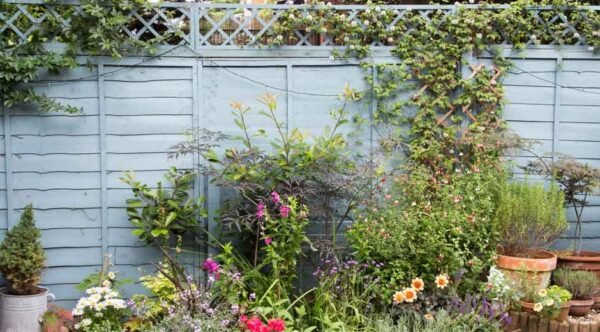Guarding Your Garden: The Power of Weed Barriers

Meta Description
Discover the effectiveness of weed barriers in protecting your garden against unwanted plants. Learn ways to install and maintain them.
Gardening is a beloved pastime for many, offering a chance to connect with nature, cultivate beautiful landscapes, and grow your own fresh produce. However, every gardener knows that one persistent and unwelcome guest can wreak havoc on your carefully tended soil – weeds. These unwanted intruders can steal nutrients, water, and sunlight from your plants, leading to a diminished yield and a more labor-intensive gardening experience. But fear not! There’s a powerful tool in the gardener’s arsenal that can help combat this problem – weed barriers. In this blog post, we will explore the benefits of weed barriers, the various types available, and how to effectively use them to protect your garden.
The Weedy Dilemma
If you’re looking for a solution to both enhance the appearance of your garden and protect it from weeds, premium brown mulch is an excellent option if your in Salt Lake City. This mulch, known for its natural, earthy aesthetic, not only beautifies your garden space but also doubles as an effective weed barrier.
The dense layer of mulch blocks sunlight, preventing weed seeds from sprouting. Additionally, premium brown mulch helps to retain soil moisture, reducing the need for frequent watering and contributing to a healthier, more robust garden.
Weeds are resilient and opportunistic plants that can grow almost anywhere. They compete with your garden plants for essential resources and can quickly overtake your carefully nurtured flora. The challenges posed by weeds include:
- Resource Competition: Weeds deprive your garden plants of nutrients, water, and sunlight, hindering their growth and productivity.
- Increased Maintenance: Weeds require constant attention, leading to additional time and effort spent on gardening tasks like weeding and hoeing.
- Pest Havens: Weeds can shelter and attract pests, creating a less hospitable environment for your desired plants.
- Aesthetic Decline: Weeds can mar the beauty of your garden, diminishing its visual appeal.
The Solution: Weed Barriers
Weed barriers, also known as weed control fabrics or landscape fabric, offer an effective solution to combat weeds in your garden. These materials create a physical barrier between the soil and the outside environment, preventing weed seeds from taking root and growing. Here are some benefits of using weed barriers in your garden:
- Weed Suppression: The primary function of weed barriers is to suppress weed growth. By blocking sunlight and impeding weed root penetration, these fabrics prevent weeds from establishing themselves in your garden.
- Water Conservation: Weed barriers help conserve soil moisture by reducing evaporation. This means less frequent watering for your garden plants.
- Improved Soil Temperature: Weed barriers can moderate soil temperature, keeping it cooler in the summer and warmer in the winter, creating a more stable environment for your plants.
- Reduced Maintenance: With fewer weeds to contend with, you’ll spend less time weeding and more time enjoying your garden.
- Enhanced Aesthetics: Weed barriers create a neat and tidy appearance in your garden, enhancing its visual appeal.
Types of Weed Barriers
Several types of weed barriers are available, each with its unique characteristics and applications. The most common types include:
- Woven Weed Barrier: This type of fabric is made of woven polypropylene or similar material. It is durable, allows water and nutrients to penetrate, and is suitable for long-term use in perennial beds or under mulch.
- Non-Woven Weed Barrier: Non-woven fabrics are made from a mat of synthetic fibers. They are effective at suppressing weeds, while still allowing for water and air exchange. They are often used in annual or vegetable gardens.
- Plastic Weed Barrier: These are sheets of black or clear plastic that prevent weeds from growing through. While they are highly effective, they do not allow for water penetration and can create an impermeable layer in the soil.
- Organic Mulch: While not a traditional weed barrier, organic mulch like wood chips, straw, or pine needles can serve as a natural weed suppressant. As the mulch breaks down, it enriches the soil with organic matter.
Effective Use of Weed Barriers
To maximize the benefits of weed barriers in your garden, here are some essential tips for their effective use:
- Proper Installation: Ensure the weed barrier is installed correctly. It should be placed on the soil surface, covering the entire garden area. Cut holes or slits for planting and secure the fabric with pins or stakes.
- Mulch or Gravel Cover: Apply a layer of organic mulch or decorative gravel on top of the weed barrier. This not only enhances the aesthetics of your garden but also helps hold the fabric in place.
- Regular Inspection: Periodically check your garden for any tears, gaps, or signs of wear in the weed barrier. Promptly address any issues to prevent weeds from infiltrating.
Weed barriers are a powerful tool for gardeners seeking to protect their gardens from the relentless encroachment of weeds. By suppressing weed growth, conserving resources, and reducing maintenance, these versatile materials can enhance the beauty and productivity of your garden. So, if you’re looking to guard your garden against the weed invasion, consider the power of weed barriers as a valuable addition to your gardening toolkit. With proper installation and care, you can enjoy a weed-free, thriving garden that brings joy and beauty to your outdoor space.



